Thiết kế và lắp đặt hệ thống đo dao dộng rung trong hầm gió
Bài báo trình bày các bước thiết kế và lắp đặt bộ mô hình đo dao động rung trong hầm gió diện tích 1m x 1m. Việc phân tích lý thuyết về kết cấu lò xo trong mô hình này giúp ta có thể tự thiết kế được một hệ thống phù hợp với diện tích hầm gió, tốc độ gió cũng như là mô hình cánh khảo sát để thu được kết quả như mong muốn. Hệ thống này giúp ta quan sát được sự dao động của cánh khảo sát bằng mắt thường, nhưng để biết được chính xác cánh đã dao động lên xuống như thế nào, góc xoay cánh ra sao, ta cần đến sự giúp đỡ của bộ cảm biến siêu âm Sensick UM30-21-118
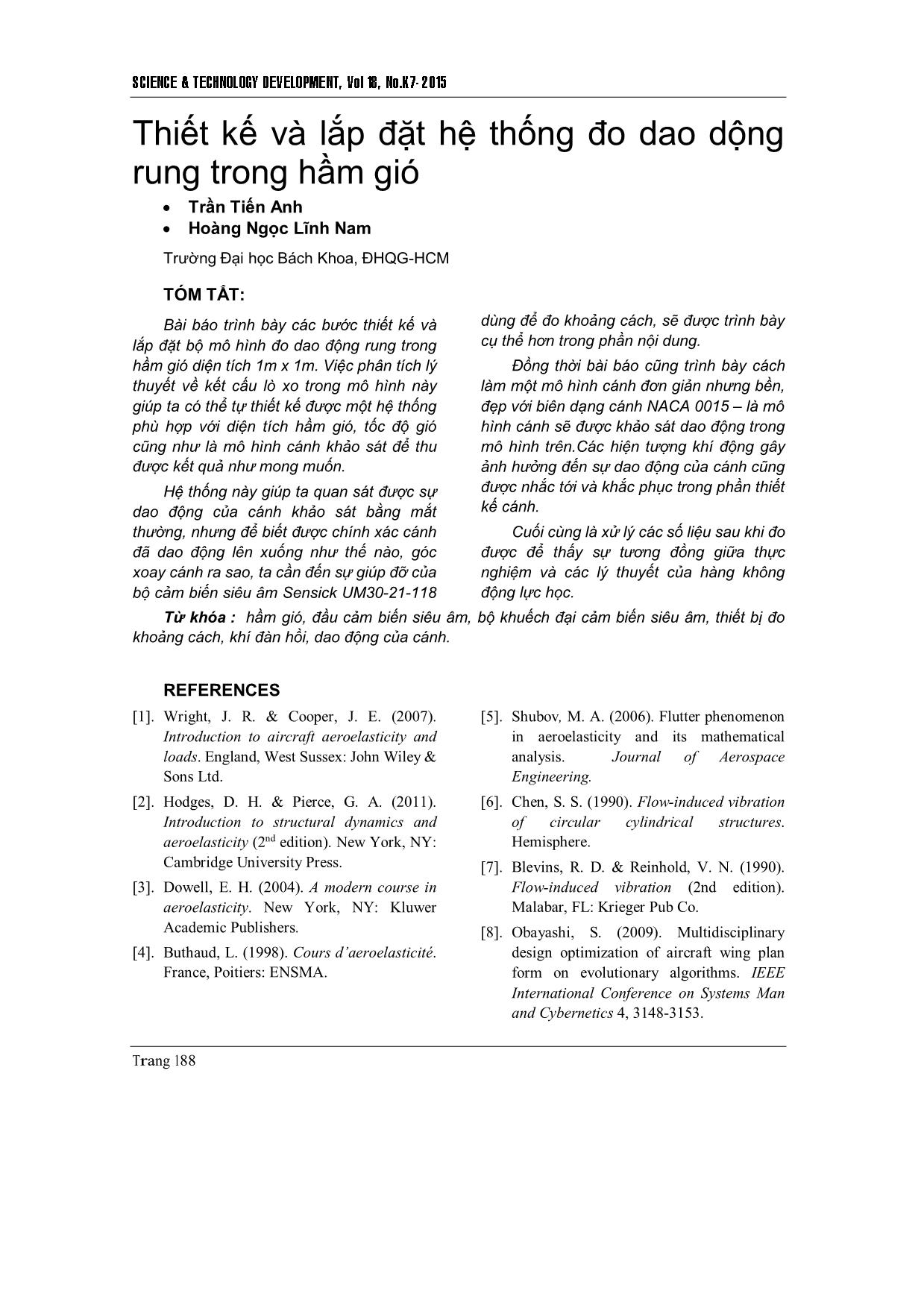
Trang 1
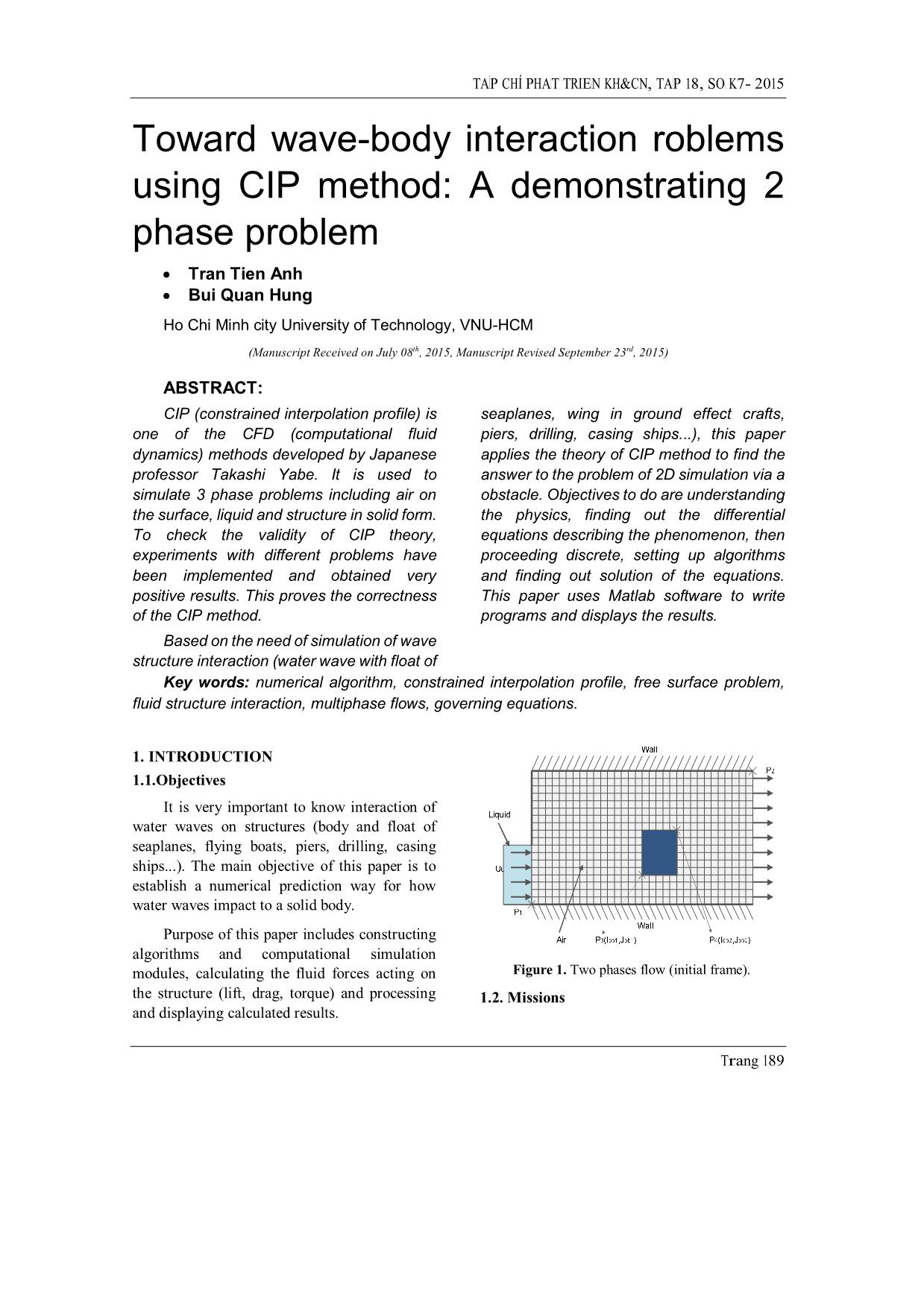
Trang 2
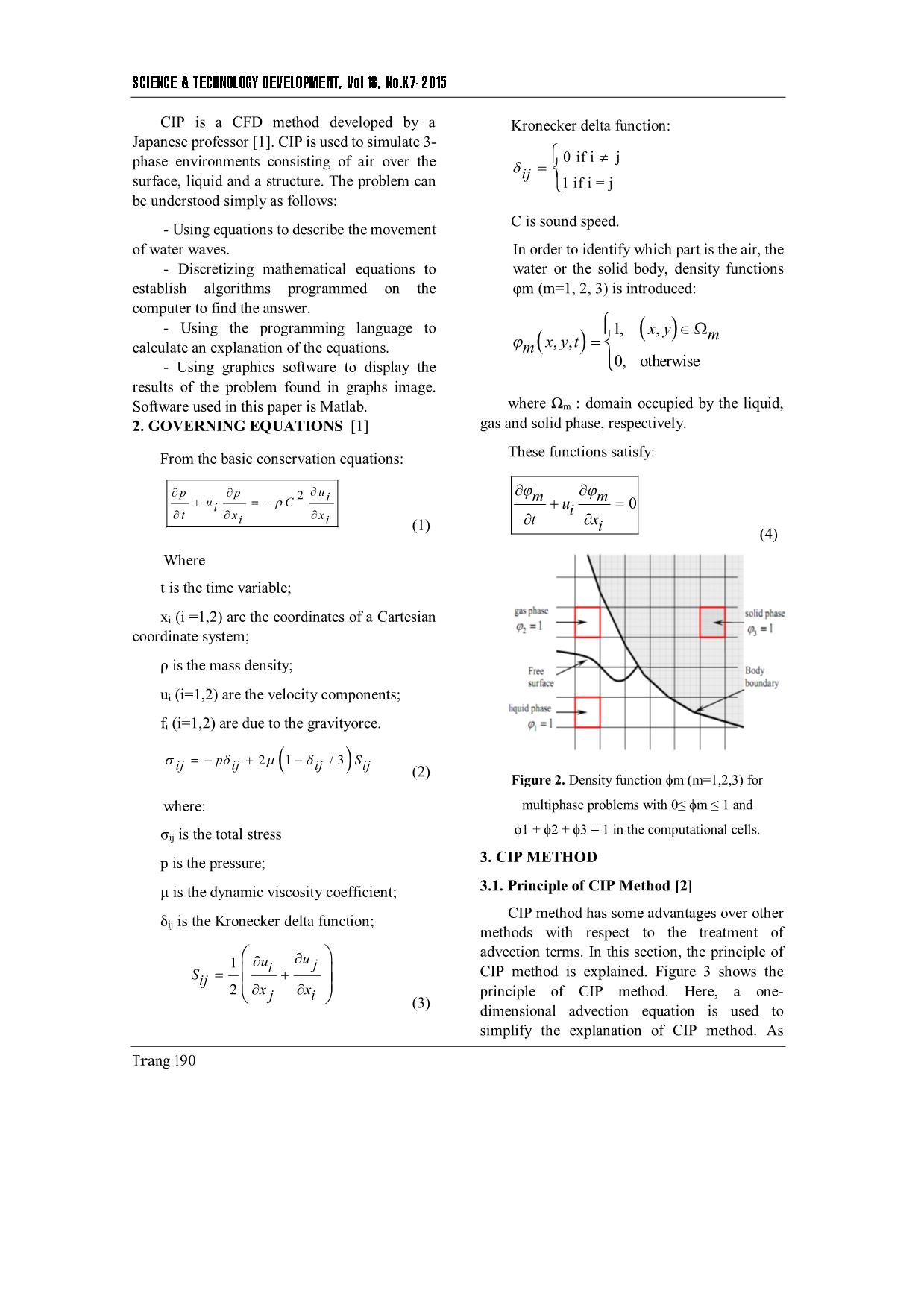
Trang 3
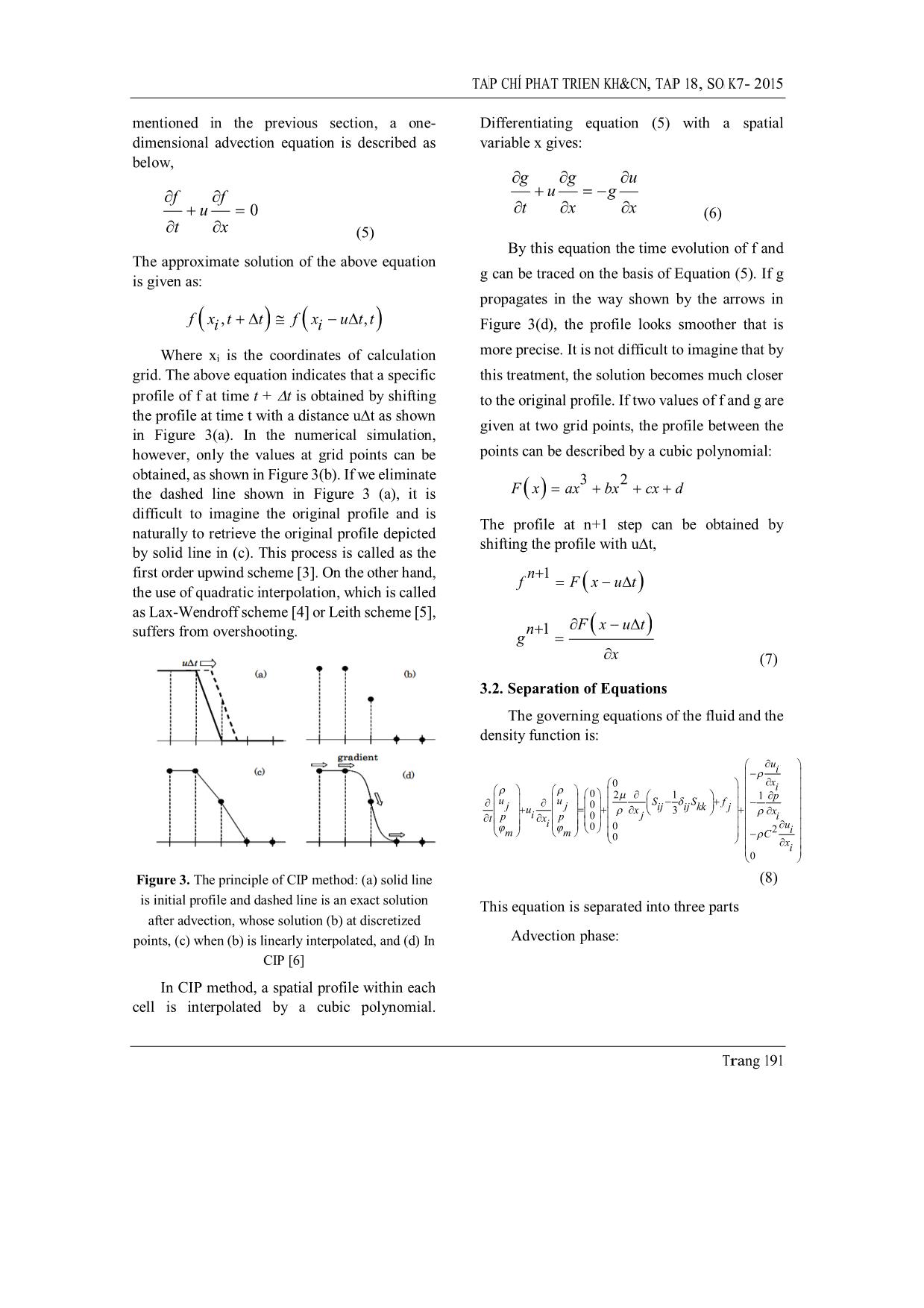
Trang 4

Trang 5
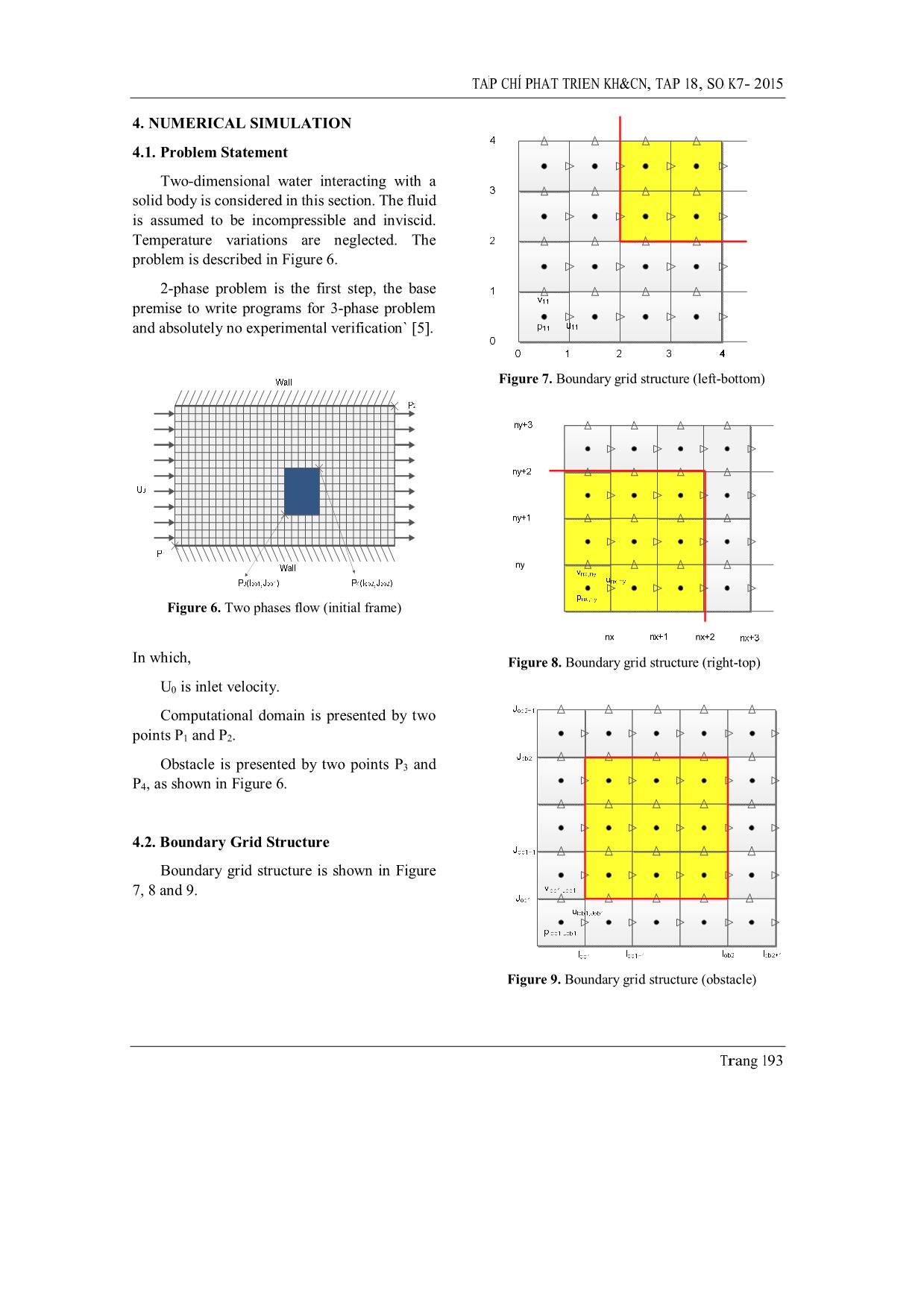
Trang 6
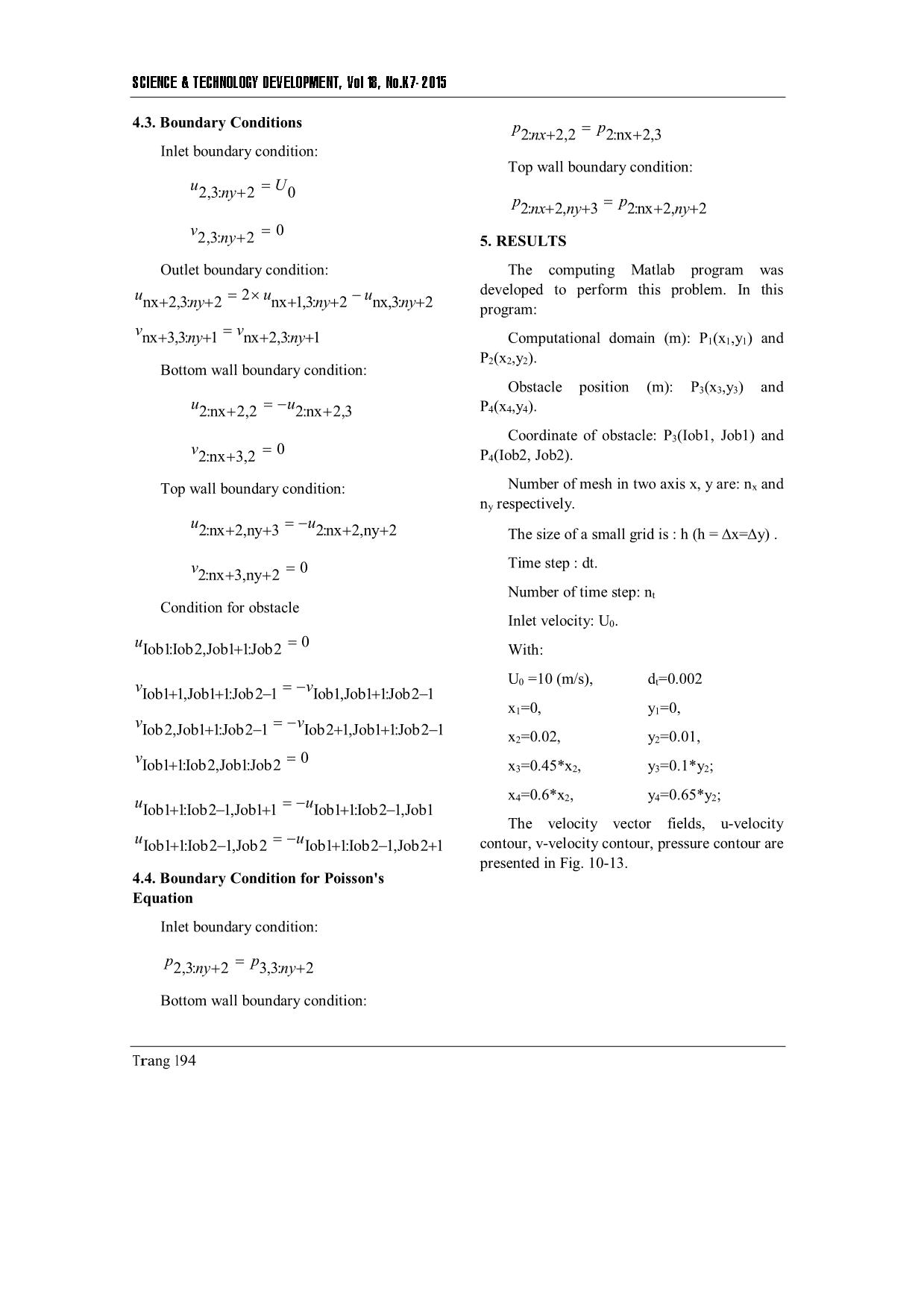
Trang 7
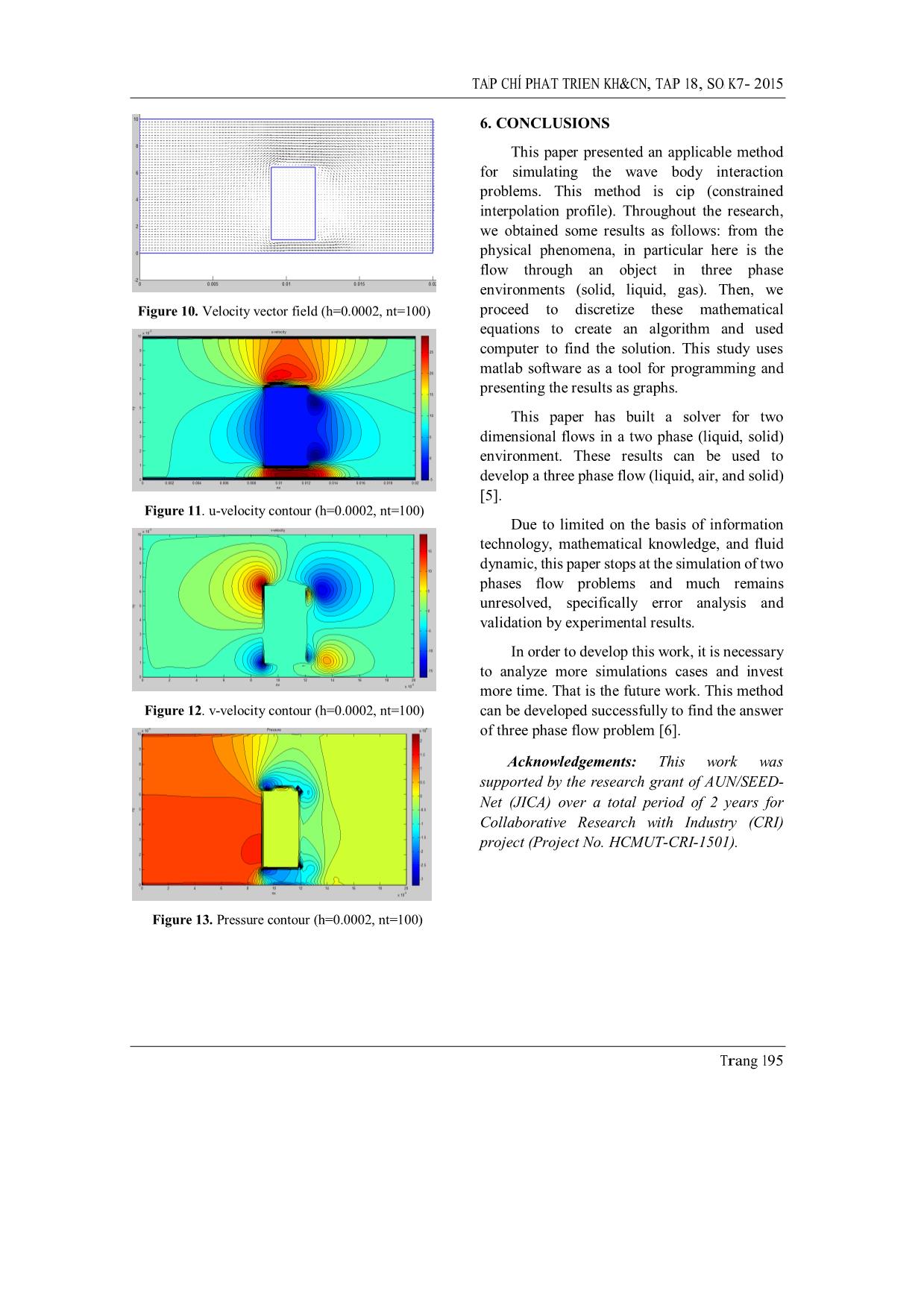
Trang 8
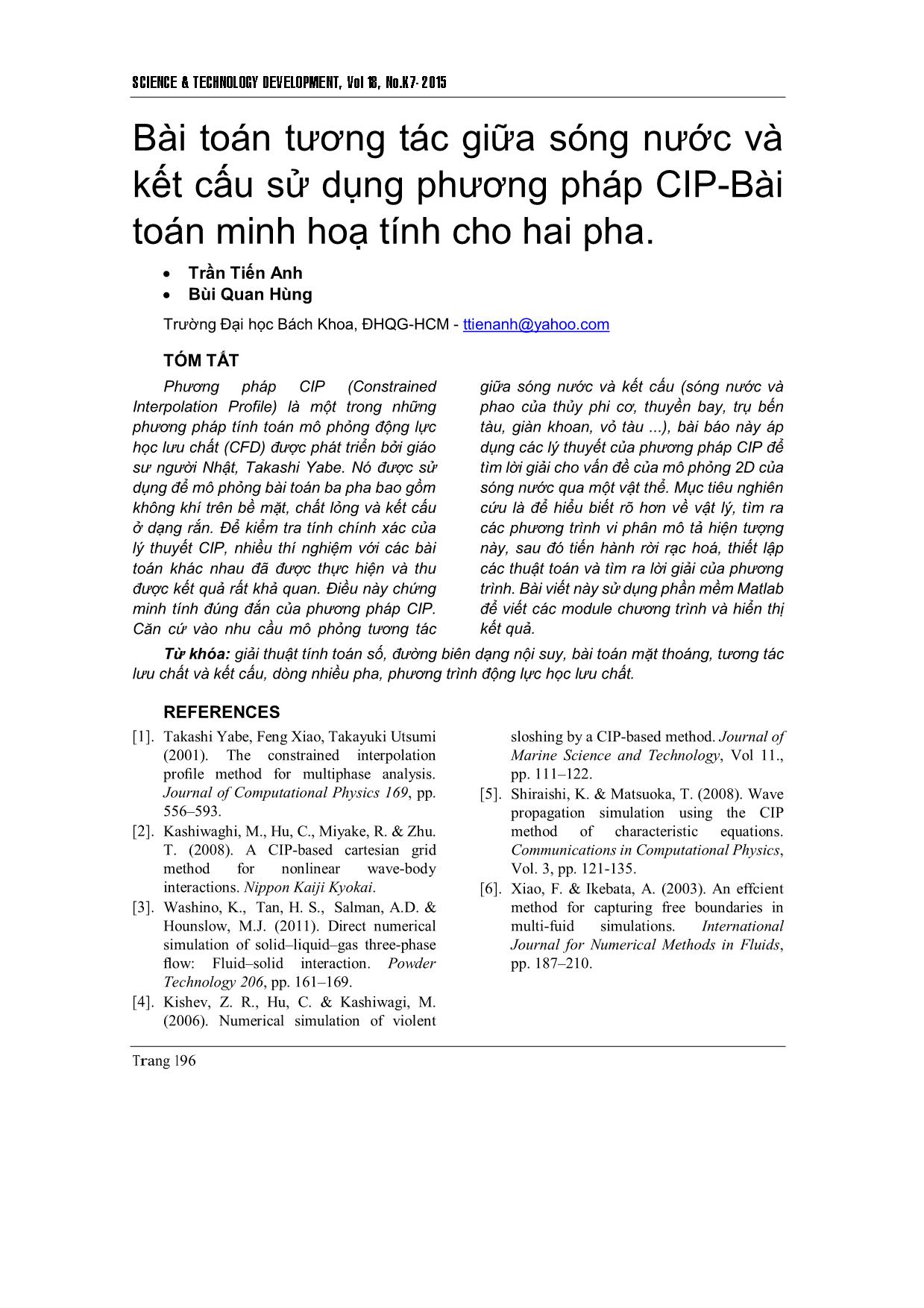
Trang 9
Bạn đang xem tài liệu "Thiết kế và lắp đặt hệ thống đo dao dộng rung trong hầm gió", để tải tài liệu gốc về máy hãy click vào nút Download ở trên
Tóm tắt nội dung tài liệu: Thiết kế và lắp đặt hệ thống đo dao dộng rung trong hầm gió

SCIENCE & TECHNOLOGY DEVELOPMENT, Vol 18, No.K7- 2015 Trang 188 Thiết kế và lắp đặt hệ thống đo dao dộng rung trong hầm gió Trần Tiến Anh Hoàng Ngọc Lĩnh Nam Trường Đại học Bách Khoa, ĐHQG-HCM TÓM TẮT: Bài báo trình bày các bước thiết kế và lắp đặt bộ mô hình đo dao động rung trong hầm gió diện tích 1m x 1m. Việc phân tích lý thuyết về kết cấu lò xo trong mô hình này giúp ta có thể tự thiết kế được một hệ thống phù hợp với diện tích hầm gió, tốc độ gió cũng như là mô hình cánh khảo sát để thu được kết quả như mong muốn. Hệ thống này giúp ta quan sát được sự dao động của cánh khảo sát bằng mắt thường, nhưng để biết được chính xác cánh đã dao động lên xuống như thế nào, góc xoay cánh ra sao, ta cần đến sự giúp đỡ của bộ cảm biến siêu âm Sensick UM30-21-118 dùng để đo khoảng cách, sẽ được trình bày cụ thể hơn trong phần nội dung. Đồng thời bài báo cũng trình bày cách làm một mô hình cánh đơn giản nhưng bền, đẹp với biên dạng cánh NACA 0015 – là mô hình cánh sẽ được khảo sát dao động trong mô hình trên.Các hiện tượng khí động gây ảnh hưởng đến sự dao động của cánh cũng được nhắc tới và khắc phục trong phần thiết kế cánh. Cuối cùng là xử lý các số liệu sau khi đo được để thấy sự tương đồng giữa thực nghiệm và các lý thuyết của hàng không động lực học. Từ khóa : hầm gió, đầu cảm biến siêu âm, bộ khuếch đại cảm biến siêu âm, thiết bị đo khoảng cách, khí đàn hồi, dao động của cánh. REFERENCES [1]. Wright, J. R. & Cooper, J. E. (2007). Introduction to aircraft aeroelasticity and loads. England, West Sussex: John Wiley & Sons Ltd. [2]. Hodges, D. H. & Pierce, G. A. (2011). Introduction to structural dynamics and aeroelasticity (2nd edition). New York, NY: Cambridge University Press. [3]. Dowell, E. H. (2004). A modern course in aeroelasticity. New York, NY: Kluwer Academic Publishers. [4]. Buthaud, L. (1998). Cours d’aeroelasticité. France, Poitiers: ENSMA. [5]. Shubov, M. A. (2006). Flutter phenomenon in aeroelasticity and its mathematical analysis. Journal of Aerospace Engineering. [6]. Chen, S. S. (1990). Flow-induced vibration of circular cylindrical structures. Hemisphere. [7]. Blevins, R. D. & Reinhold, V. N. (1990). Flow-induced vibration (2nd edition). Malabar, FL: Krieger Pub Co. [8]. Obayashi, S. (2009). Multidisciplinary design optimization of aircraft wing plan form on evolutionary algorithms. IEEE International Conference on Systems Man and Cybernetics 4, 3148-3153. TAÏP CHÍ PHAÙT TRIEÅN KH&CN, TAÄP 18, SOÁ K7- 2015 Trang 189 Toward wave-body interaction roblems using CIP method: A demonstrating 2 phase problem Tran Tien Anh Bui Quan Hung Ho Chi Minh city University of Technology, VNU-HCM (Manuscript Received on July 08th, 2015, Manuscript Revised September 23rd, 2015) ABSTRACT: CIP (constrained interpolation profile) is one of the CFD (computational fluid dynamics) methods developed by Japanese professor Takashi Yabe. It is used to simulate 3 phase problems including air on the surface, liquid and structure in solid form. To check the validity of CIP theory, experiments with different problems have been implemented and obtained very positive results. This proves the correctness of the CIP method. Based on the need of simulation of wave structure interaction (water wave with float of seaplanes, wing in ground effect crafts, piers, drilling, casing ships...), this paper applies the theory of CIP method to find the answer to the problem of 2D simulation via a obstacle. Objectives to do are understanding the physics, finding out the differential equations describing the phenomenon, then proceeding discrete, setting up algorithms and finding out solution of the equations. This paper uses Matlab software to write programs and displays the results. Key words: numerical algorithm, constrained interpolation profile, free surface problem, fluid structure interaction, multiphase flows, governing equations. 1. INTRODUCTION 1.1.Objectives It is very important to know interaction of water waves on structures (body and float of seaplanes, flying boats, piers, drilling, casing ships...). The main objective of this paper is to establish a numerical prediction way for how water waves impact to a solid body. Purpose of this paper includes constructing algorithms and computational simulation modules, calculating the fluid forces acting on the structure (lift, drag, torque) and processing and displaying calculated results. Figure 1. Two phases flow (initial frame). 1.2. Missions SCIENCE & TECHNOLOGY DEVELOPMENT, Vol 18, No.K7- 2015 Trang 190 CIP is a CFD method developed by a Japanese professor [1]. CIP is used to simulate 3- phase environments consisting of air over the surface, liquid and a structure. The problem can be understood simply as follows: - Using equations to des
File đính kèm:
 thiet_ke_va_lap_dat_he_thong_do_dao_dong_rung_trong_ham_gio.pdf
thiet_ke_va_lap_dat_he_thong_do_dao_dong_rung_trong_ham_gio.pdf

